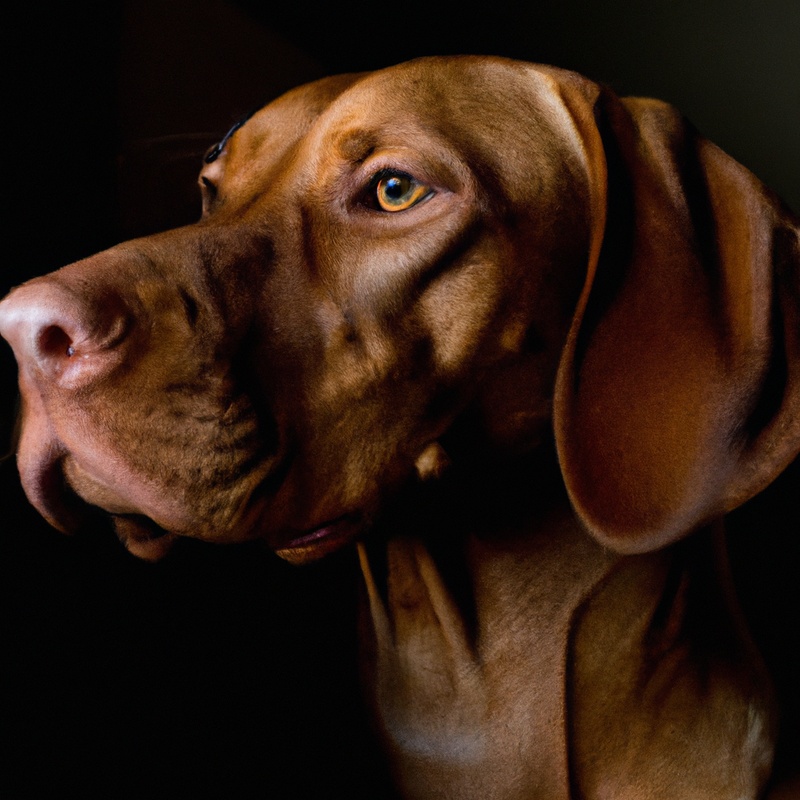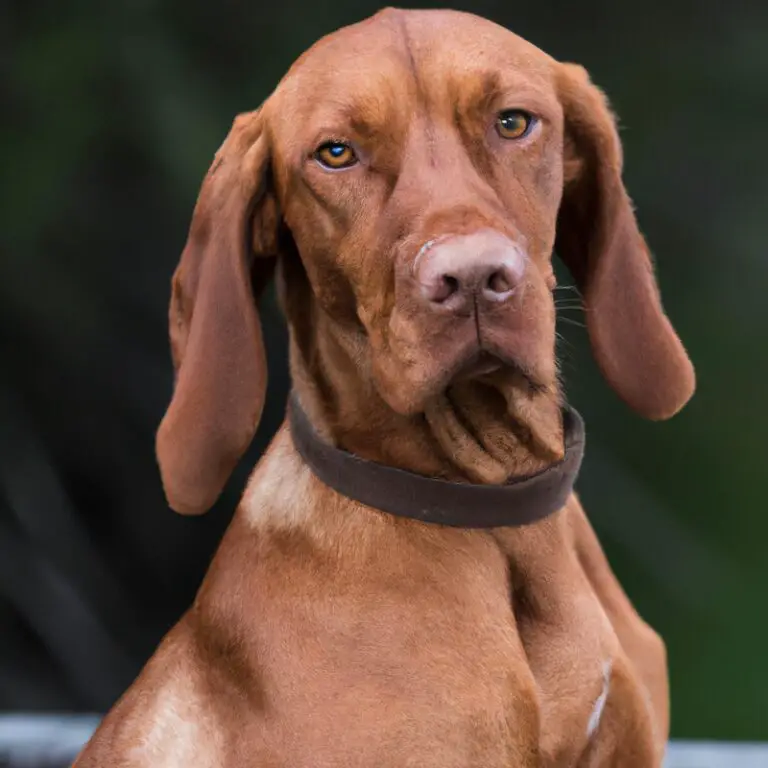Are Vizslas Good Guard Dogs?
Key Takeaways:
- Vizslas are friendly and affectionate dogs, making them a poor choice for a dedicated guard dog role.
- While Vizslas have strong protective instincts, they lack the size and intimidating presence of traditional guard dog breeds.
- Vizslas can be trained to alert their owners of potential threats, but they are more likely to greet strangers with enthusiasm rather than act aggressively.
- If you are looking for a guard dog that is highly protective, Vizslas may not be the best fit, but they excel in other areas such as being excellent family companions.
Are Vizslas good guard dogs? When it comes to protecting your home and loved ones, it’s essential to choose a breed with the right qualities.
In this blog, I’ll delve into the world of guard dogs, exploring what makes them effective and important in our lives.
But what about Vizslas? These elegant and affectionate dogs are known for their beauty and loyalty, but can they also serve as reliable protectors?
Join me as I evaluate the unique qualities of Vizslas and uncover whether they have what it takes to be great guard dogs.
| Yes | No | |
| Size | Medium | |
| Appearance | Intimidating | |
| Protective Instinct | Yes | No |
| Aggression | No | |
| Friendliness | To family | To strangers |
| Trainability | Yes | |
| Energy Level | High | |
| Noise Level | Moderate |
Understanding the Role of Guard Dogs
What Makes a Good Guard Dog
A good guard dog is one that possesses certain key traits and characteristics. Firstly, they need to have a strong protective instinct, being alert and aware of any potential threats.
They should also be intelligent and trainable, able to follow commands and understand when to take action.
Additionally, a good guard dog should have a calm and confident temperament, allowing them to react appropriately in different situations. Finally, good physical attributes such as strength and endurance are important for their role as a protector.

The Importance of Guard Dogs
Guard dogs play a crucial role in ensuring the safety and security of properties and individuals. They provide a strong deterrent against potential threats, alerting their owners to any suspicious activity.
Guard dogs are trained to protect their territory and respond to dangerous situations.
They possess a highly developed sense of hearing and smell. Their loyalty, intelligence, and protective instinct make them an invaluable asset for home and personal security.
Whether it’s safeguarding your property or providing peace of mind, guard dogs are an important part of many security strategies.

Different Types of Guard Dogs
There are various types of guard dogs that excel in protecting homes and properties. Here are some examples:
- German Shepherds: Known for their intelligence and loyalty, German Shepherds are often used as police and military dogs due to their ability to quickly learn and follow commands.
- Rottweilers: With their strong build and protective nature, Rottweilers make excellent guard dogs. They are highly trainable and create a powerful deterrent for potential intruders.
- Doberman Pinschers: These dogs are known for their speed, strength, and fearlessness, making them a popular choice for guard dog roles. They are intensely loyal and can be trained to be protective of their families.
- Bullmastiffs: Featuring a large size and a calm disposition, Bullmastiffs are excellent at neutralizing threats. They are incredibly strong, making them an intimidating presence for intruders.
- Boxers: Although known for their friendly and playful nature, Boxers can also be great at guarding homes. They are alert, agile, and possess a natural protective instinct that can be shaped through training.
It’s important to note that individual temperament and training play significant roles in a dog’s suitability as a guard dog. Consulting with a professional trainer can help you find the right breed and individual dog for your specific security needs.
Evaluating Vizslas as Guard Dogs
Vizslas’ Protective Instincts
Vizslas have a strong protective instinct. They are alert and will bark to warn you of any potential threats.
Their loyalty and attachment to their owners make them naturally inclined to protect their family.
Vizslas are often wary of strangers, but they are not typically aggressive. However, they will not hesitate to defend their loved ones if they feel they are in danger.
Their protective instincts make them capable guard dogs, as they are vigilant, attentive, and protective of their family.
Vizslas’ Alertness and Sensitivity
Vizslas are known for their high level of alertness and sensitivity. They have keen instincts and are always aware of their surroundings.
This makes them excellent at detecting any potential threats or unusual activities.
Vizslas are sensitive to changes in their environment and can quickly pick up on people’s emotions. They are highly perceptive and can often sense when something is wrong.
Their alertness and sensitivity make them great companions and can contribute to their effectiveness as guard dogs.

Vizslas’ Size and Strength
Vizslas are medium-sized dogs with a strong and lean build. They typically weigh between 45 to 65 pounds and stand around 21 to 24 inches tall at the shoulder.
Although they may not have the size of larger guard dog breeds, Vizslas make up for it with their exceptional strength.
They have well-developed muscles and are known for their endurance and agility. So, while they may not be the biggest dogs around, their combination of size and strength makes them capable and reliable guardians.
Vizslas’ Trainability
Vizslas are highly trainable dogs.
Their intelligence, eagerness to please, and strong work ethic make them quick learners.
They respond well to positive reinforcement methods such as treats, praise, and play.
Consistency and patience are key when training a Vizsla, as they can become bored with repetitive tasks.
They excel in obedience training and can also be trained for various activities like agility, tracking, and hunting.
With proper training and socialization from an early age, Vizslas can become well-behaved and obedient companions.
Limitations of Vizslas as Guard Dogs
Vizslas’ Friendly and Social Nature
Vizslas are known for their friendly and social nature, making them delightful companions. They thrive on human interaction and are generally very affectionate dogs.
Vizslas love being a part of the family and are great with children.
Their sociable temperament makes them easy to train and they typically get along well with other dogs and pets. Whether you’re hosting a party or going for a walk in the park, Vizslas will charm everyone with their friendly and outgoing personality.
Vizslas’ Lack of Aggression
Vizslas are known for their lack of aggression.
They are generally friendly and gentle dogs who are more likely to greet a stranger with a wagging tail than with aggression.
This lack of aggression can make them unsuitable as guard dogs as they are unlikely to exhibit the protective behavior that is typically expected from such dogs.
However, their friendly nature makes them great as family pets and companion animals.
They will prefer snuggling up on the couch with you rather than guarding your house.
Vizslas’ Energy Level
Vizslas have a high energy level and require regular exercise to stay happy and healthy. They are an active breed and thrive when given opportunities to engage in physical activities such as running, playing fetch, or participating in dog sports.
Daily exercise is essential to prevent boredom and destructive behavior.
Mental stimulation is also important for Vizslas, so puzzle toys and training sessions can be beneficial. Keep in mind that their energy level may decrease with age, but they will still require regular exercise throughout their lives.
Vizslas’ Potential Separation Anxiety
Vizslas have a strong bond with their owners and can experience separation anxiety when left alone for long periods.
This breed thrives on companionship and can become stressed or anxious when separated from their family.
To help alleviate separation anxiety in Vizslas, consider:
- Gradual desensitization: Start by leaving them alone for short periods and gradually increase the duration.
- Plenty of exercise and mental stimulation: Tiring them out before leaving can help reduce anxiety.
- Providing a safe space: Create a comfortable and secure area where they can retreat when alone.
- Scheduling regular quality time: Ensuring they receive attention and companionship when you’re available.
- Consultation with a professional: Seek guidance from a trainer or behaviorist for additional strategies tailored to your dog’s needs.
Responsibilities of Owning a Vizsla as a Guard Dog
Proper Training and Socialization
Proper training and socialization are essential for Vizslas to thrive as guard dogs.
You need to establish clear boundaries and consistent rules from the start to ensure they understand what is expected of them.
Socialization is equally important, as it helps them become comfortable and friendly with people and other animals.
Expose them to different environments, sounds, and experiences to build their confidence.
Consistency, positive reinforcement, and early socialization will help your Vizsla become a well-rounded guard dog.
Exercise and Mental Stimulation
Exercise and mental stimulation are vital for the well-being of your Vizsla. These active dogs require daily exercise to help burn off their energy and prevent boredom.
Take them for long walks, runs, or engage in activities like fetch or agility training.
Mental stimulation is equally important and can be achieved through puzzle toys, obedience training, or interactive games. A tired and mentally stimulated Vizsla is less likely to engage in destructive behaviors.
Remember to provide a balance of physical and mental exercise to keep your Vizsla happy and well-adjusted.
Providing a Safe and Secure Environment
To provide a safe and secure environment for your Vizsla, there are a few key things to keep in mind.
Firstly, ensure that your home is secure, with proper fencing and secure locks on doors and windows.
Secondly, provide a comfortable and safe space indoors for your Vizsla, with access to fresh water and a cozy bed.
Thirdly, establish a routine for exercise and mental stimulation, as a tired Vizsla is less likely to engage in destructive behaviors.
Finally, always supervise your Vizsla around unfamiliar people or animals to prevent any potential conflicts.
Regular Veterinary Care
Regular veterinary care is essential for keeping your Vizsla healthy and happy. Schedule regular check-ups with your vet to ensure all vaccinations are up to date and to address any potential health concerns.
Regular check-ups also allow for early detection and treatment of any underlying health conditions.
In addition, make sure to follow your vet’s recommendations for flea, tick, and heartworm prevention. Remember, preventive care can go a long way in keeping your Vizsla in peak condition.
Frequently Asked Questions
Can Vizslas be Trained for Guard Duties?
Yes, Vizslas can be trained for guard duties. They possess a natural instinct to protect their family and territory.
With the right training, socialization, and consistent reinforcement, Vizslas can excel in guarding and alerting their owners to potential threats.
Their loyalty, intelligence, and agility make them capable guardians. However, it’s important to note that while Vizslas can be trained for guard duties, they may not have the same level of aggression as breeds specifically bred for protection work.
How to Socialize a Vizsla?
Socializing a Vizsla is crucial for their well-being. Start early by exposing them to different sights, sounds, and experiences.
Take them to new places, introduce them to different people and animals.
Encourage positive interactions, praise and reward good behavior. Regularly engage them in obedience training and group classes.
Gradually increase the difficulty level and exposure to new situations.
Keep socializing a positive and enjoyable experience for your Vizsla.
How Much Exercise do Vizslas Need?
Vizslas are an energetic and active breed, so they require a good amount of exercise.
On average, they need around 45 minutes to 1 hour of vigorous exercise every day.
This can include activities like running, playing fetch, or going for long walks.
Mental stimulation is also important for them, so interactive toys and puzzle games can be beneficial.
Remember to tailor the exercise routine to your Vizsla’s age and fitness level.
Are Vizslas Suitable for Families with Children?
Vizslas can be a great fit for families with children.
Their friendly and affectionate nature makes them excellent companions for kids.
They are known for their high energy levels and love to play and participate in various activities with children.
Vizslas are also very intelligent and trainable, which allows them to adapt well to family routines and rules.
However, it’s important to supervise interactions between Vizslas and young children to ensure a safe and positive environment for everyone involved.
Final Verdict
While Vizslas possess some qualities that make them potential guard dogs, such as their protective instincts and alertness, they are not the most ideal breed for this role. Their friendly and social nature, lack of aggression, and high energy levels can limit their effectiveness as guard dogs.
However, with proper training, socialization, and a safe environment, Vizslas can still provide some level of security.
Ultimately, it is important to consider the specific needs and capabilities of the breed before deciding to use a Vizsla as a guard dog.







